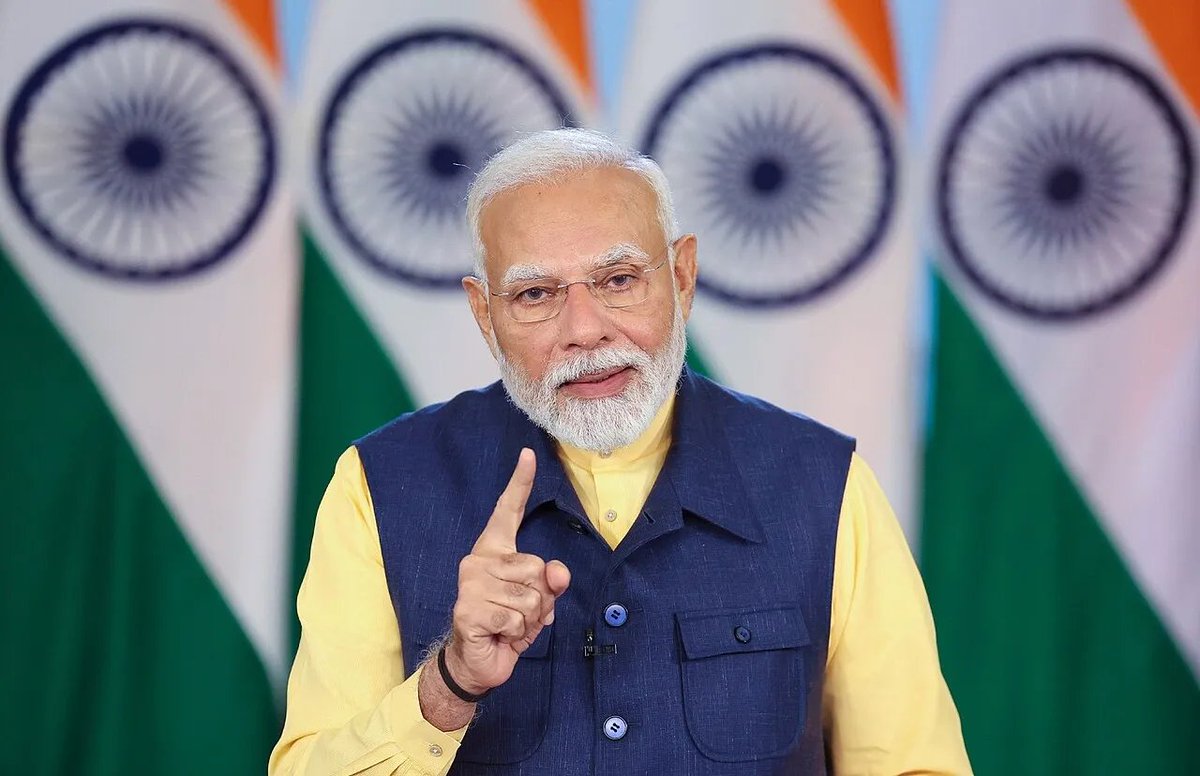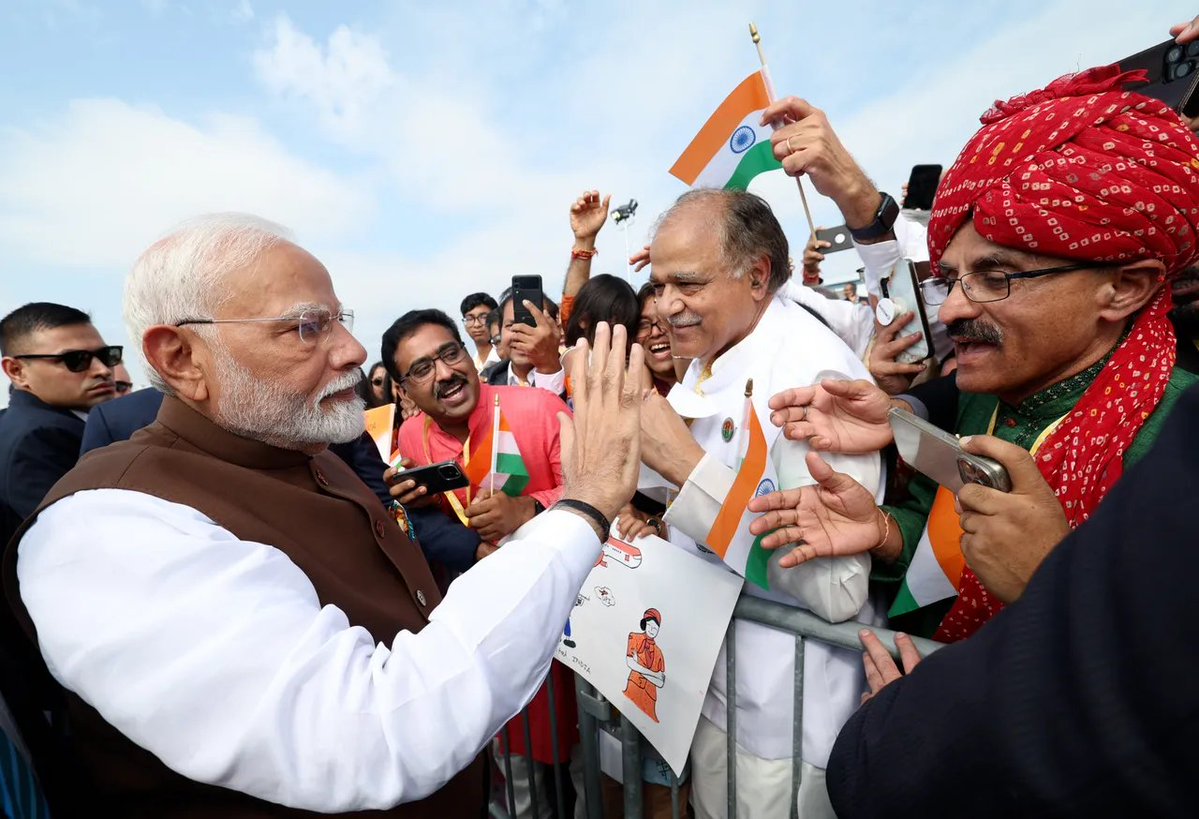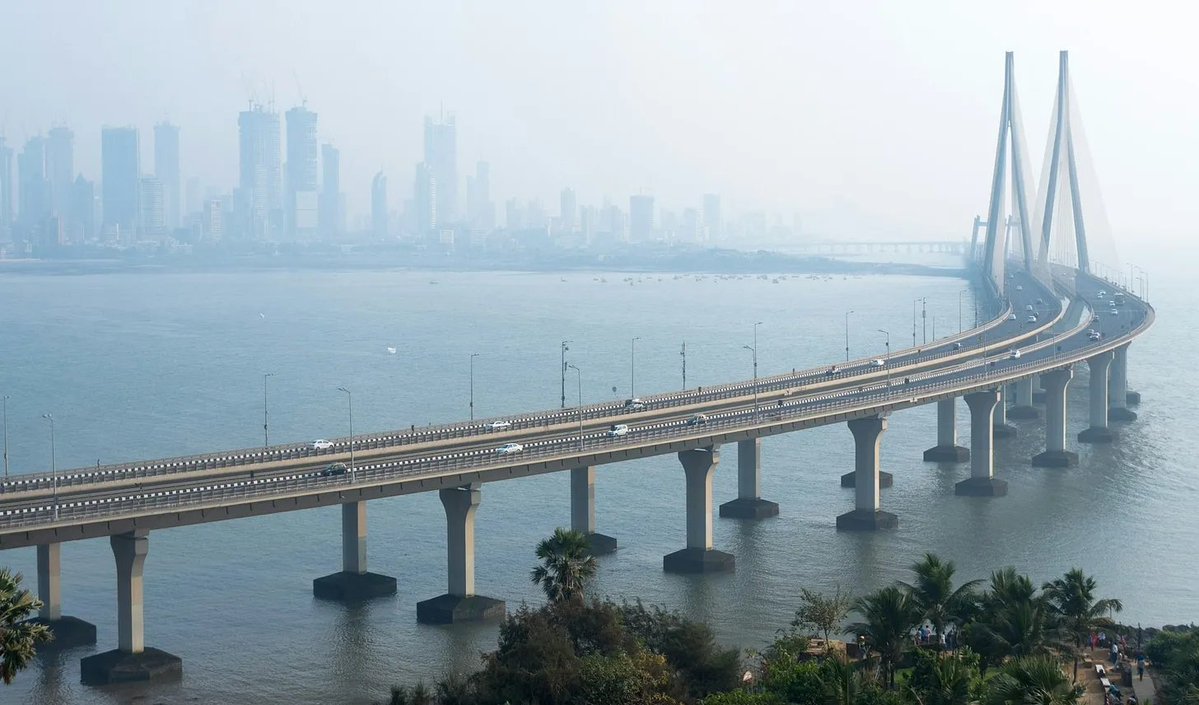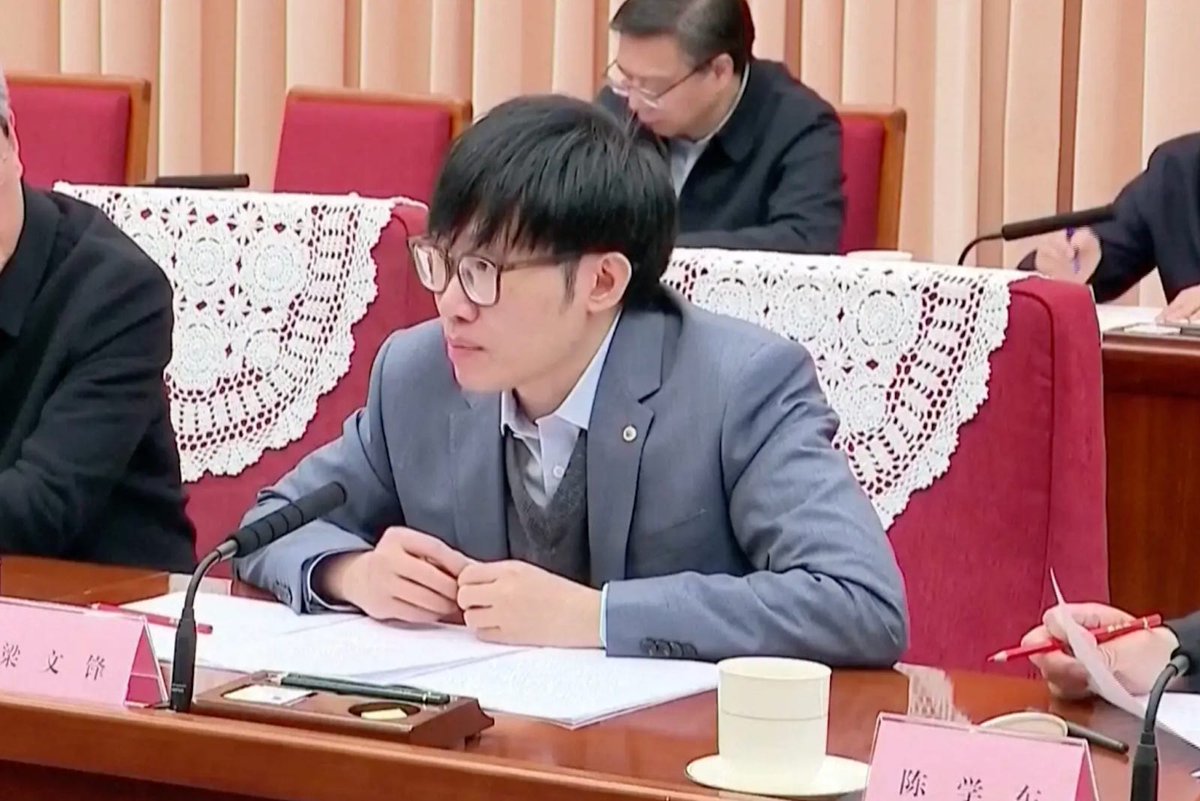Absolutely false. China is an industrial giant that dominates manufacturing. This doesn't mean it isn't intra-dependent in some ways.
But Western economic sanctions just matter much less than they once did. We're no longer in 1995.
A short thread on some highlights.
1/n
But Western economic sanctions just matter much less than they once did. We're no longer in 1995.
A short thread on some highlights.
1/n
https://twitter.com/kamilkazani/status/1580951716970651648
From 2000 to 2020, China’s share of worldwide new industrial robot installations grew from 0.4% to 44%.
China’s elites are unified on the plan to substitute man with machine for the economy of the future.
Subscribers can read more: brief.bismarckanalysis.com/p/china-tests-…
2/n
China’s elites are unified on the plan to substitute man with machine for the economy of the future.
Subscribers can read more: brief.bismarckanalysis.com/p/china-tests-…
2/n

China made a sweeping effort to outcompete Germany and Japan’s robotics industries.
In 2020, 37% of China’s industrial robot shipments came from domestic companies like Siasun, Efort, and Estun.
But China still lags in higher-end robots and key parts like reduction gears.
3/n
In 2020, 37% of China’s industrial robot shipments came from domestic companies like Siasun, Efort, and Estun.
But China still lags in higher-end robots and key parts like reduction gears.
3/n

This will likely change in the future. Achieving large-scale automation is prioritized over building a world-class robotics industry, but both are strategically key.
Germany’s most prominent robotics firm, Kuka, is now Chinese-owned.
4/n
Germany’s most prominent robotics firm, Kuka, is now Chinese-owned.
4/n

Like all developed countries, China faces the dilemma of demographic decline.
China is betting on automation through robotics to avoid a hard demographic landing.
Their success or failure is significant the economic and political future of humanity.
5/n
China is betting on automation through robotics to avoid a hard demographic landing.
Their success or failure is significant the economic and political future of humanity.
5/n

China MUCH MORE than a producer of consumer goods. Industrial robotics isn't the only robust advance industrial sector it has.
The same is true of electric vehicles, green energy, nuclear energy, the space industry, etc.
6/n
The same is true of electric vehicles, green energy, nuclear energy, the space industry, etc.
6/n
This isn't even mentioning legacy industries that are the bread and butter of Western GDP making us dependent on them such as production of steel or refining of minerals!
Let's take a further look below. 👇
7/n
Let's take a further look below. 👇
7/n
The West bet its economic future on "Green Energy". Of these solar power is the only one that has the potential not just to reduce carbon emissions, but to upset global energy politics.
Subscribers can read the Bismarck Brief here:
brief.bismarckanalysis.com/p/photovoltaic…
8/n
Subscribers can read the Bismarck Brief here:
brief.bismarckanalysis.com/p/photovoltaic…
8/n

Just 1% of solar energy reaching the Earth’s surface could power global civilization 50 times over.
9/n
9/n
Capturing even this much of the Sun’s energy is no small task.
But since 2000, solar power has grown almost 800x and now provides 3% of global electricity. Prices dropped an order of magnitude over last decade.
Obstacles certainly remain, but the trajectory has been set.
10/n
But since 2000, solar power has grown almost 800x and now provides 3% of global electricity. Prices dropped an order of magnitude over last decade.
Obstacles certainly remain, but the trajectory has been set.
10/n
Western environmentalists pioneered the rationale for solar, but this progress has largely been captured by China through advances in manufacturing.
China controlled 79% of cell production in 2019 and has become the single largest deployer of solar. (!!)
11/n
China controlled 79% of cell production in 2019 and has become the single largest deployer of solar. (!!)
11/n

PR usually presents solar as a low-intrusion, energy source that is compatible with rolling green hills and cute old buildings.
In reality successful solar would mean carpeting entire landscapes with black arrays of heated silicon, visible from space.
China is willing.
12/n
In reality successful solar would mean carpeting entire landscapes with black arrays of heated silicon, visible from space.
China is willing.
12/n

Last year, China produced 85% of the global supply of refined rare earth elements (REEs). (!)
China’s effective monopoly is a victory of industrial and trade policy, not good luck from natural deposits.
Subscribers can read the Bismarck Brief here: brief.bismarckanalysis.com/p/china-refine…
13/n
China’s effective monopoly is a victory of industrial and trade policy, not good luck from natural deposits.
Subscribers can read the Bismarck Brief here: brief.bismarckanalysis.com/p/china-refine…
13/n

“Rare earths” is an umbrella term and misnomer. REEs are more geologically abundant than many commodity metals like tin and copper.
REEs vary in value by orders of magnitude. The most valuable REEs are used to make permanent magnets and are far less common than others.
14/n
REEs vary in value by orders of magnitude. The most valuable REEs are used to make permanent magnets and are far less common than others.
14/n

The bottleneck for REEs, in general and for more valuable oxides, is not mining them, but processing and refining them into usable metals and alloys. Then, manufacturing components and finished goods from them.
Nevertheless China still has a global 63% share of REE mining.
15/n
Nevertheless China still has a global 63% share of REE mining.
15/n

This share is declining due to new Western efforts to increase REE extraction. But China’s monopoly is robust to this, since it is based on industrial capacity, not extraction.
It’s not minerals that China might embargo to the West, but finished products.
16/n
It’s not minerals that China might embargo to the West, but finished products.
16/n

China is the world's largest producer of machine tools, mostly for the domestic market, and also the largest importer.
By 2016 China's per-capita machine tool production was already on par with the United States, and growing rapidly.
bismarckanalysis.com/Machine_Tools_…
17/n
By 2016 China's per-capita machine tool production was already on par with the United States, and growing rapidly.
bismarckanalysis.com/Machine_Tools_…
17/n

SpaceX dominates coverage of space activity today. National programs seem to be relics, the glory days of Apollo long gone.
18/n
18/n
But not in China, which landed a rover on Mars last year. This has not only military but economic implications!
Their space industry is second to Space X but their achievements outpace Russia, Europe, Japan, and India.
brief.bismarckanalysis.com/p/the-long-mar…
19/n
Their space industry is second to Space X but their achievements outpace Russia, Europe, Japan, and India.
brief.bismarckanalysis.com/p/the-long-mar…
19/n

Since the 1990s, the Chinese government has consistently directed resources into developing a national space industry.
In addition to landing their Mars rover, China has sent men to orbit, returned Moon samples, and greatly reduced launch costs to a competitive rate.
20/n
In addition to landing their Mars rover, China has sent men to orbit, returned Moon samples, and greatly reduced launch costs to a competitive rate.
20/n

At first glance, these are the achievements of the China National Space Administration (CNSA), whose logo is more reminiscent of Star Trek’s Starfleet insignia than China’s patriotic red and yellow.
But CNSA is just one of a number of important space bureaucracies.
21/n
But CNSA is just one of a number of important space bureaucracies.
21/n

China’s human spaceflight program is separately handled by the China Manned Space Agency (CMSA).
Unlike CNSA, which is under nominally civilian leadership, CMSA ultimately reports to the Central Military Commission of the PLA.
The PLA maintains China’s launch sites.
22/n
Unlike CNSA, which is under nominally civilian leadership, CMSA ultimately reports to the Central Military Commission of the PLA.
The PLA maintains China’s launch sites.
22/n
Technical design and manufacturing is handled by China’s massive state-owned aerospace companies, CASIC and CASC. (!)
In 2021, CASC launched over 130k kg of payload into orbit, second only to SpaceX and about as much as the rest of the competition put together.
23/n
In 2021, CASC launched over 130k kg of payload into orbit, second only to SpaceX and about as much as the rest of the competition put together.
23/n

Coordinating so many bureaucracies to achieve these technical successes is no easy task.
Likely, it is coordinated by an informal “Space Leading Group” appointed directly by the CCP Central Committee, consisting of senior officials from across the space industry.
24/n
Likely, it is coordinated by an informal “Space Leading Group” appointed directly by the CCP Central Committee, consisting of senior officials from across the space industry.
24/n
Such a group has been attested to in the past, though it is unclear if it still exists.
In any case, the space program remains a top priority for Chinese leadership, who are not averse to strategically creating, dividing, or transmuting bureaucracies to achieve goals.
25/n
In any case, the space program remains a top priority for Chinese leadership, who are not averse to strategically creating, dividing, or transmuting bureaucracies to achieve goals.
25/n
Recently, private space companies have been allowed to develop in the expectation they can eventually support the national program’s goals.
These companies, like OneSpace and LandSpace, are perhaps analogous in ambition to SpaceX or Blue Origin.
26/n
These companies, like OneSpace and LandSpace, are perhaps analogous in ambition to SpaceX or Blue Origin.
26/n

In China, however, the “long march” into space will continue to be led by the government. Plans include the completion of China’s orbital space station, more rover missions, and even a manned Moon mission.
Eventually, China aims to be the preeminent power in space.
27/n
Eventually, China aims to be the preeminent power in space.
27/n

As geopolitical tensions rise, this goal will likely depend on the Chinese space industry’s ability to operate with fewer resources and foreign assistance.
It has proven capable of doing so before and, arguably, already has in-built robustness as a result of isolation.
28/n
It has proven capable of doing so before and, arguably, already has in-built robustness as a result of isolation.
28/n
If you're not yet a subscriber to the Bismarck Brief (@bismarckanlys ) you can learn more about China's space industry by listening to the sample audio version here:
29/n
29/n
Will quantum technology break encryption, create unhackable communications, and obsolete stealth technology?
The two biggest supporters of finding out are the U.S. and Chinese governments.
Subscribers can read the Bismarck Brief here:
brief.bismarckanalysis.com/p/quantum-tech…
30/n
The two biggest supporters of finding out are the U.S. and Chinese governments.
Subscribers can read the Bismarck Brief here:
brief.bismarckanalysis.com/p/quantum-tech…
30/n

The theorized potential of quantum technology is still basically constrained by the sensitivity of subatomic particles.
Current hardware is unable to correct noise-induced errors to a sufficient degree. Error reduction and correction remains the main focus of R&D.
31/n
Current hardware is unable to correct noise-induced errors to a sufficient degree. Error reduction and correction remains the main focus of R&D.
31/n

In the US, the key players driving research are tech companies like IBM, Google, and Amazon.
The live player behind Chinese progress is the physicist Pan Jianwei. Pan has led several high-profile research projects and holds both academic and administrative positions.
32/n
The live player behind Chinese progress is the physicist Pan Jianwei. Pan has led several high-profile research projects and holds both academic and administrative positions.
32/n

Funding is a bottleneck to technological breakthroughs. But so is the authority afforded to live players in shaping research institutions and priorities.
The quantum arms race will be won or lost by empowering unique scientific minds, not by bureaucratizing science.
33/n
The quantum arms race will be won or lost by empowering unique scientific minds, not by bureaucratizing science.
33/n

Hopefully it is now clear that China is not only an advanced industrial economy, but is the most significant player besides the United States in nearly all near industries and technologies.
How did China reach its position as an industrial and technological giant?
34/n
How did China reach its position as an industrial and technological giant?
34/n
Manufacturing consumer goods is nothing to scoff at.
China's consumer goods allowed them to accumulate capital and import expertise from Japan and Taiwan. Now, the Chinese manage factories in Africa. The strategy had compounding effects:
palladiummag.com/2021/07/05/les…
35/n
China's consumer goods allowed them to accumulate capital and import expertise from Japan and Taiwan. Now, the Chinese manage factories in Africa. The strategy had compounding effects:
palladiummag.com/2021/07/05/les…
35/n
I have to commend following @palladiummag. Their magazine is consistently competently looking at political and industrial developments in China and around the world.
palladiummag.com
36/n
palladiummag.com
36/n
Kind of amazing how long different sectors of China's economy have been prognosticated by Western pundits as “on the verge of collapse.”
At some point, you’d think the ability to not in fact collapse for so long would be a sign of resilience!
37/n
At some point, you’d think the ability to not in fact collapse for so long would be a sign of resilience!
37/n
Very well China is an industrial and technological giant. But can it feed its population?
Yes, easily:
38/n
Yes, easily:
https://twitter.com/SamoBurja/status/1580220214285066241
38/n
So what about financial infrastructure?
The Chinese central bank does not just set monetary policy, but directly intervenes to change China’s payments infrastructure.
The strategy is to maximize legibility and control over transactions.
brief.bismarckanalysis.com/p/the-peoples-…
39/n
The Chinese central bank does not just set monetary policy, but directly intervenes to change China’s payments infrastructure.
The strategy is to maximize legibility and control over transactions.
brief.bismarckanalysis.com/p/the-peoples-…
39/n

Unlike the U.S. Federal Reserve or the European Central Bank, the decision-making of the People’s Bank of China is not formally independent of the rest of the government.
The PBC is a cabinet-level department that ultimately reports to Chinese paramount leader Xi Jinping.
40/n
The PBC is a cabinet-level department that ultimately reports to Chinese paramount leader Xi Jinping.
40/n

Perhaps the most notable intervention by the PBC is the launch of the digital yuan, the first digital currency to be issued by a major central bank.
While actual usage remains very low, the PBC has already integrated the digital yuan into China’s biggest payments services.
41/n
While actual usage remains very low, the PBC has already integrated the digital yuan into China’s biggest payments services.
41/n

Western speculation frames the actions of the PBC as attempts to challenge the U.S. in international financial infrastructure.
But China is reluctant to challenge the U.S. in this domain. The achievable objective instead is locking down domestic control of the yuan.
43/n
But China is reluctant to challenge the U.S. in this domain. The achievable objective instead is locking down domestic control of the yuan.
43/n

And here we're almost reaching the actual limits of Chinese economic development: Politics.
But to properly analyze it we must first understand the key constraints of China's power structure.
44/n
But to properly analyze it we must first understand the key constraints of China's power structure.
44/n
Xi Jinping is perhaps the most powerful person in the world. If not, he is second only to the President of the United States.
Xi’s power is based on his skill in winning at factional politics.
Subscribers can read the Bismarck Brief here:
brief.bismarckanalysis.com/p/the-foundati…
45/n
Xi’s power is based on his skill in winning at factional politics.
Subscribers can read the Bismarck Brief here:
brief.bismarckanalysis.com/p/the-foundati…
45/n

Xi rose up through a system where two competing factions dominated China’s politics.
But even as his career advanced, Xi cultivated his own network of close friends and allies, and skill in managing patronage networks.
46/n
But even as his career advanced, Xi cultivated his own network of close friends and allies, and skill in managing patronage networks.
46/n

When Xi ascended to national leadership in 2012, he was something of a compromise candidate. But he quickly broke the two-faction norm.
He installed his own bench of loyalists in the highest offices and succeeded in a massive re-circulation of elites at all levels.
47/n
He installed his own bench of loyalists in the highest offices and succeeded in a massive re-circulation of elites at all levels.
47/n

Xi has focused less on economic growth than consolidating power and social stability at home, while pursuing great power competition with the U.S.
His successor will most likely emerge from the new faction Xi built and elevated to power.
48/n
His successor will most likely emerge from the new faction Xi built and elevated to power.
48/n

This is why in the very long run I am bearish on China. Not because of lack of democracy, or alleged food shortages, or allegedly secretly weak economy but because the system seems unsuited to handle the succession problem well.
samoburja.com/the-succession…
49/n
samoburja.com/the-succession…
49/n
Xi Jinping has held power for 10 years. In November, he is expected to begin an unprecedented third term.
Xi is now 69 years old. China’s future depends on if Xi can solve the succession problem.
Subscribers can read the Bismarck Brief here: brief.bismarckanalysis.com/p/xi-jinpings-…
50/n
Xi is now 69 years old. China’s future depends on if Xi can solve the succession problem.
Subscribers can read the Bismarck Brief here: brief.bismarckanalysis.com/p/xi-jinpings-…
50/n

Xi has repeatedly purged potential rivals during his tenure. This has helped cement Xi’s personal faction as the dominant player in the Communist Party.
But it has also made it more dangerous to be a live player with a personal empire, both in politics and in business.
51/n
But it has also made it more dangerous to be a live player with a personal empire, both in politics and in business.
51/n

Xi’s internal reforms and personnel choices are not favoring live players who have proven capable of building and using personal empires.
Rather, they are favoring technocrats able to rise up rapidly in Xi’s more centralized political economy.
52/n
Rather, they are favoring technocrats able to rise up rapidly in Xi’s more centralized political economy.
52/n

Xi is a live player. But he is making it less likely that a live player will succeed him.
The longer Xi goes without a clear and capable successor, the more China’s future depends on Xi’s remaining years in power.
53/n
The longer Xi goes without a clear and capable successor, the more China’s future depends on Xi’s remaining years in power.
53/n

China's future depending on Xi is already concerning enough. But more than that we might already be seeing China's first real barrier to industrial and technological growth:
Conflicts with their nonconforming founders.
54/n
Conflicts with their nonconforming founders.
54/n
Why do Chinese billionaires keep disappearing?
By cracking down on industrialists, China hopes to make its economy more technocratic, but risks economic growth and the country’s political future.
Subscribers can read the Bismarck Brief here:
brief.bismarckanalysis.com/p/jack-ma-xi-j…
55/n
By cracking down on industrialists, China hopes to make its economy more technocratic, but risks economic growth and the country’s political future.
Subscribers can read the Bismarck Brief here:
brief.bismarckanalysis.com/p/jack-ma-xi-j…
55/n

Jack Ma, founder of Alibaba and China’s former richest man, is the highest profile businessperson to be “disappeared,” after criticizing China’s financial regulators and state banks in late 2020.
Ma was reported missing before resurfacing in a few low profile events.
56/n
Ma was reported missing before resurfacing in a few low profile events.
56/n
Alibaba settled an antitrust investigation opened in the wake of Ma’s criticism with a record $2.8 billion fine.
Ant Group, the fintech company Ma wanted to spin off from Alibaba, had to suspend its IPO on personal orders of Xi Jinping before being forcibly restructured.
57/n
Ant Group, the fintech company Ma wanted to spin off from Alibaba, had to suspend its IPO on personal orders of Xi Jinping before being forcibly restructured.
57/n

Ma may not be detained, but other Chinese billionaires have not been so lucky. Some have been detained and released. Others have disappeared and even had their assets sold off.
Former Anbang Insurance Group CEO Wu Xiaohui was sentenced to 18 years in prison in 2018.
58/n
Former Anbang Insurance Group CEO Wu Xiaohui was sentenced to 18 years in prison in 2018.
58/n

There are various patterns of conflict: some are more clearly politically motivated, or harsher, than others. But all serve to make clear that the Party stands above industrialists.
Under Xi, the Party’s ultimate goal is not economic growth, but social stability.
59/n
Under Xi, the Party’s ultimate goal is not economic growth, but social stability.
59/n
This however presents something of a paradox.
Since the era of Deng Xiaoping, economic growth has been the lynchpin of Chinese social stability, with the necessary side effect of creating a new class of billionaires and industrialists.
60/n
Since the era of Deng Xiaoping, economic growth has been the lynchpin of Chinese social stability, with the necessary side effect of creating a new class of billionaires and industrialists.
60/n

Cracking down on wealthy entrepreneurs and their business empires may mitigate against anti-competitive monopolies or financial crises.
But it may also discourage the non-conformism and institutional foundings necessary to create new engines of economic growth.
61/n
But it may also discourage the non-conformism and institutional foundings necessary to create new engines of economic growth.
61/n
Without growth, stability is threatened. The Party may need to turn to other sources of legitimacy such as increased assertiveness abroad.
How Xi and his peers thread this needle will have major implications for the economic & political futures of both China and the world.
62/n
How Xi and his peers thread this needle will have major implications for the economic & political futures of both China and the world.
62/n
At 63 tweets this is no longer a short thread😂 I need hop on a few calls, but I'm far from done... watch this space.
63/n
63/n
Some more important insights and analysis of China's industry and economy from my colleagues at @bismarckanlys (give them a follow!):
64/n
https://twitter.com/bismarckanlys/status/1580997406539145216
64/n
Material technology and industry rest on a deeper bedrock of social technology. To understand the significance of such developments one has to think on the scale of civilization.
Here is my super-thread on Chinese civilization:
65/n
Here is my super-thread on Chinese civilization:
https://twitter.com/SamoBurja/status/1389191093942734849
65/n
I'll restate some highlights from that thread as well as expand on crucial points later today. For now let me emphasize this point:
66/n
https://twitter.com/SamoBurja/status/1389191301904601097
66/n
I’ve made clear I think China’s overwhelming dominance in industry and manufacturing is a real and serious strength.
Therefore, I should also tell you what I think China’s most serious weakness is:
Gaining and supporting foreign allies.
67/n
Therefore, I should also tell you what I think China’s most serious weakness is:
Gaining and supporting foreign allies.
67/n

The end of the era of Chairman Mao is a turning point in China’s recent history. It was mostly a positive turning point.
Mao’s successor Deng Xiaoping reformed China’s political economy to encourage accumulating private wealth through trade, business, and industry.
68/n
Mao’s successor Deng Xiaoping reformed China’s political economy to encourage accumulating private wealth through trade, business, and industry.
68/n

But Deng’s reforms meant that China lost a powerful social technology it had under Mao, but not after:
Revolutionary communism.
69/n
Revolutionary communism.
69/n

As long as China was a revolutionary communist state, it had a strong justification to commit both tangible and intangible resources to making and supporting foreign communist allies.
It also made Chinese elites more persuasive to their fellow communists elsewhere.
70/n
It also made Chinese elites more persuasive to their fellow communists elsewhere.
70/n

Mao’s China sent millions of Chinese troops to fight in the Korean War, which ultimately created North Korea. This included Mao’s own eldest son, who was killed in action.
China sent advisors, weapons, food, medicine, and more to North Vietnam during the Vietnam War.
71/n
China sent advisors, weapons, food, medicine, and more to North Vietnam during the Vietnam War.
71/n

According to the father of Pakistan’s nuclear weapons program, Mao agreed to send Pakistan enriched uranium and bomb designs in a secret agreement that was eventually fulfilled.
Pakistan was a close Chinese ally against India, which was itself friendly to the USSR.
72/n
Pakistan was a close Chinese ally against India, which was itself friendly to the USSR.
72/n

Deng’s reforms traded revolutionary communism for “socialism with Chinese characteristics.”
This allowed China to become economically strong through trade with the West, but paradoxically weakened China’s influence abroad by removing the basis for foreign intervention.
73/n
This allowed China to become economically strong through trade with the West, but paradoxically weakened China’s influence abroad by removing the basis for foreign intervention.
73/n
Non-revolutionary China became rich, but also shied away from intervening in global affairs until Xi Jinping.
Xi, however, has not and almost certainly cannot revive revolutionary communism.
74/n
Xi, however, has not and almost certainly cannot revive revolutionary communism.
74/n
Xi has tried to revive socialist virtue at home. But abroad, Xi is limited to making appeals based on Chinese national self-interest.
Needless to say, this doesn’t work very well.
Read the Bismarck Brief on this topic here: brief.bismarckanalysis.com/p/chinas-south…
75/n
Needless to say, this doesn’t work very well.
Read the Bismarck Brief on this topic here: brief.bismarckanalysis.com/p/chinas-south…
75/n

This is true even in China's geopolitical backyard! Xi's global ambitions lack a viable role for Southeast Asia. A key strategic weakness:
In 2016, over 64% of China’s maritime trade went through the narrow Strait of Malacca, between Indonesia, Malaysia, and Singapore.
76/n
In 2016, over 64% of China’s maritime trade went through the narrow Strait of Malacca, between Indonesia, Malaysia, and Singapore.
76/n
Prior to Xi’s rise to power in 2012, China’s overall strategy was based on making the country’s rapid industrialization unobjectionable, domestically, by neighbors, and by the U.S.
Xi has shifted course towards more explicitly making China a world power in its own right.
77/n
Xi has shifted course towards more explicitly making China a world power in its own right.
77/n

This shift is very popular in China and helps Xi’s goal of establishing the Communist Party as the guarantor of stability.
But it limits, rather than expands, Xi’s options for negotiating deals and making alliances with the elites of China’s neighbors in Southeast Asia.
78/n
But it limits, rather than expands, Xi’s options for negotiating deals and making alliances with the elites of China’s neighbors in Southeast Asia.
78/n

What is the case for Chinese hegemony if you are not Chinese?
The shear between Xi’s ambitions for China and the necessity of economic access to Southeast Asia is a gap that the U.S., Japan, and Vietnam are happy to exploit in order to counter China’s interests.
79/n
The shear between Xi’s ambitions for China and the necessity of economic access to Southeast Asia is a gap that the U.S., Japan, and Vietnam are happy to exploit in order to counter China’s interests.
79/n

Mao’s China could recuperate foreign governments and proxy forces as fellow communists or allies to the revolutionary cause.
Xi’s China cannot. It has no viable political role for its many foreign economic partners.
80/n
Xi’s China cannot. It has no viable political role for its many foreign economic partners.
80/n
China has substituted Mao’s calculated and ideological foreign intervention for over investment with China’s vast new wealth.
See Pakistan, where China has invested billions with little to show for it.
Read the Bismarck Brief on this topic here: brief.bismarckanalysis.com/p/pakistan-sho…
81/n
See Pakistan, where China has invested billions with little to show for it.
Read the Bismarck Brief on this topic here: brief.bismarckanalysis.com/p/pakistan-sho…
81/n

Pakistan has a growing population of 220 million. For ten years, China has committed billions to economic development in the country.
But the massive investments have not led to an economic transformation of that country!
82/n
But the massive investments have not led to an economic transformation of that country!
82/n
The China-Pakistan Economic Corridor (CPEC) was launched in 2013 as a $62 billion infrastructure program.
It has succeeded in building new coal plants, roads, and a port on Pakistan’s coast. But it has fallen far short of high initial expectations.
83/n
It has succeeded in building new coal plants, roads, and a port on Pakistan’s coast. But it has fallen far short of high initial expectations.
83/n

Pakistan still suffers from shortages in energy and water. Food prices are rising. Plans to build an overland "corridor" to China have been abandoned.
Pakistan’s debt is spiraling out of control. The CPEC projects aren’t proving profitable on paper for either country.
84/n
Pakistan’s debt is spiraling out of control. The CPEC projects aren’t proving profitable on paper for either country.
84/n

The lack of political conditions attached to Chinese investment have made many believe a Chinese economic world order is a foregone conclusion
But major economic growth always follows internal reform. China won’t be able to invest its way to a new economic world order
85/n
But major economic growth always follows internal reform. China won’t be able to invest its way to a new economic world order
85/n

Even in a thread as long as this I can't really present the full research on all of these important topics.
Those of you who have read this far, can afford it, and need to understand these topics really should subscribe to the Bismarck Brief:
brief.bismarckanalysis.com/subscribe
86/n
Those of you who have read this far, can afford it, and need to understand these topics really should subscribe to the Bismarck Brief:
brief.bismarckanalysis.com/subscribe
86/n
There is little to show for Chinese investment in places like Pakistan, because economic growth depends on political reform, not just more investment.
But non-revolutionary China is averse to interfering in foreign domestic politics.
87/n
But non-revolutionary China is averse to interfering in foreign domestic politics.
87/n
Much is made of the purported Chinese alliance with Russia, or good relations with developing countries in Africa or the BRICS bloc.
But these relationships are impotent and narrow compared to deeply integrated alliances like NATO or the European Union.
88/n
But these relationships are impotent and narrow compared to deeply integrated alliances like NATO or the European Union.
88/n

China's most advanced thinking in how to interfere in other countries is bribing key individuals.
Compare this to the deep penetration and wide spectrum influence over client states held by a true global hegemon like the United States.
89/n
Compare this to the deep penetration and wide spectrum influence over client states held by a true global hegemon like the United States.
89/n
The result is that even as China has grown far more powerful, it has not picked up new key allies, client states, or proxy forces abroad.
For better or worse, China stands alone. Given China’s dependence on trade for growing wealth, this is a strategic mistake for them.
90/n
For better or worse, China stands alone. Given China’s dependence on trade for growing wealth, this is a strategic mistake for them.
90/n
Ironically this non-interference and respect of the independence of countries that lack any conflict of interest with China means China is less likely to successfully use military force to achieve political ends when there are conflicts of interest.
91/n
91/n
20 years ago, China’s military was large but outdated. Today the PLA has achieved parity with the US in key ways.
Behind this modernization and reform is the prospect of invading Taiwan
Subscribers can read the Bismarck Brief here: brief.bismarckanalysis.com/p/the-pla-has-…
92/n
Behind this modernization and reform is the prospect of invading Taiwan
Subscribers can read the Bismarck Brief here: brief.bismarckanalysis.com/p/the-pla-has-…
92/n

China has greatly expanded its naval, air, and missile capabilities.
China built its own 5th generation stealth fighter. The PLA Navy is now the largest in the world by number of warships. Since 2016, the PLA Rocket Force is a standalone service.
93/n
China built its own 5th generation stealth fighter. The PLA Navy is now the largest in the world by number of warships. Since 2016, the PLA Rocket Force is a standalone service.
93/n

The PLA Ground Force has also seen doctrinal overhauls, emphasizing risk-taking and autonomy from junior officers.
All of these moves are transparently aimed at building a force capable of taking Taiwan, which PLA documents call its “main strategic direction.”
94/n
All of these moves are transparently aimed at building a force capable of taking Taiwan, which PLA documents call its “main strategic direction.”
94/n

A successful invasion of Taiwan would be unprecedented and the biggest military achievement since D-Day. It would be enormously costly and difficult.
95/n
95/n

Difficult. But no longer impossible. Why has China worked hard to achieve such capability for something they would ultimately still like to avoid?
96/n
96/n

First, by setting themselves the goal of a force capable of such an invasion they can better pursue institutional reform.
Secondly, building a force capable of such an invasion is in itself enough to forge a new balance of power in East Asia.
97/n
Secondly, building a force capable of such an invasion is in itself enough to forge a new balance of power in East Asia.
97/n

Now that we've taken a close look at China as it actually is, it might be worth reflecting why we see so little of such work in the West.
98/n
98/n
Rather than doing the difficult legwork needed to think about a foreign country, perhaps even learn the language, Westerners prefer paying a guessing game.
At times, these guesses are insightful, and at other times paranoid.
99/n
At times, these guesses are insightful, and at other times paranoid.
99/n
We suppose, we insinuate, and we theorize as to how China works, but we don’t really check.
Because unfortunately for most people China is just there to make a point about our own politics. And we have an easy time guessing the *optics* of what China is or isn't doing .
100/n
Because unfortunately for most people China is just there to make a point about our own politics. And we have an easy time guessing the *optics* of what China is or isn't doing .
100/n
Yet, China exists. It doesn't meekly wait for us to make up our mind as to what it will symbolize in our next great debate.
China is a strategic economic and military rival, perhaps a very dangerous one. This means we have to understand it thoroughly on its own terms.
101/n
China is a strategic economic and military rival, perhaps a very dangerous one. This means we have to understand it thoroughly on its own terms.
101/n
We have to undertake deep case studies. We have to read their documents. We have to look at details and concretes rather than moralizing or scoring points.
And that is what I hope to see much more of in the coming years.
102/102
And that is what I hope to see much more of in the coming years.
102/102
• • •
Missing some Tweet in this thread? You can try to
force a refresh

















